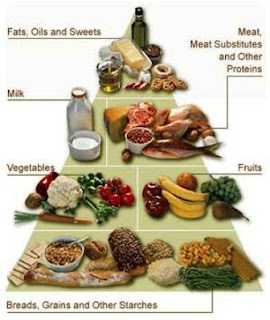NUTRITION AND MUSCLE
Build lean muscle just eating clean without killing yourself
One thing to know
What do you need to be healthy?
What do you need to be healthy?
Whatever healthy change you want to make, it’s not too late to see big benefits.
Have you ever decided to make a healthy lifestyle change but quickly given up, telling yourself that it’s too late to learn new habits? It’s time to take charge and not let your age stop you, because there’s surprisingly not that much difference between an 18-year-old brain and a 100-year-old brain.
Be active more often.
Exercise lowers your risk of heart disease, type 2 diabetes, high blood pressure, and some cancers, and that powerful effect leads to something experts call “compression of morbidity.” It essentially means you stay healthy longer in your late years, as compared with someone who spends the final five or 10 years of life battling chronic illness.
“Exercise is also one of the best things you can do to help prevent dementia and other cognitive changes,” says Hillis. Once you’re cleared by your doctor, aim for at least 30 minutes of physical activity most days of the week.
Improve your diet.
There are all sorts of plans out there to help you lose weight, but it’s not only about dropping pounds. Hillis recommends a Mediterranean-style diet for anyone hoping to avoid dementia as well as minimize other health risks. It’s high in fruits, vegetables, whole grains, olive oil, and fish, and low in meat, sugar and processed foods—all to help your cells function better.
Get quality sleep.
Lack of sleep impacts your memory, emotions, weight and even your appearance. The older you get, the harder it can be to fall and stay asleep, but you still need the same amount of hours.
According to the National Sleep Foundation, most sleep problems are a result of snoring, medication side effects and underlying medical conditions, such as acid reflux, depression and prostate problems. Addressing those issues with your doctor is a good start. You can also enjoy more satisfying sleep by creating a calming space, dedicating enough time for sleep and practicing relaxation techniques.
Stop smoking.
In as little as 24 hours of stopping smoking, there is a decrease in risk of a heart attack. As for longer-term benefits, Johns Hopkins researchers, in conjunction with scientists from other centers, have found that quitting decreased middle-aged smokers’ risk of dying early by almost half. Exercise can help you combat smoking cravings and withdrawal symptoms. Schedule fitness for the time of day you’re most likely to want a cigarette and soon you may be craving a walk or bike ride instead of a smoke. Still struggling on your own? Ask your doctor about smoking-cessation programs and aids.
Challenge your brain.
Whether it’s learning a language or driving a new route to work, your brain loves tackling fresh tasks. Make it a goal to keep learning as you age.
How to build lean muscle?
Muscle building requires strength training several times per week. Unlike competitive bodybuilding, routine weightlifting focuses on toning muscles, rather than building them, so that you have a leaner figure. At the same time, it burns fat and encourages weight loss. Follow the guidelines below to build lean muscle.
1. Lift weights for at least 30 minutes 3 days a week. You can use machines, free weights, TRX bands, weightlifting classes or a combination of these choices.
- Never go into weightlifting blind. It requires correct posture and positioning to correctly target muscle fibers. Take an intro to weightlifting class, buy some sessions with a personal trainer or take classes to learn the basics.
2. Take breaks between weightlifting days. Do your weightlifting sessions every other day to give your muscles time to rebuild and strengthen. Do cardio to burn off extra fat on your "resting" days.
3. Aim for muscle fatigue. The best results will happen when you push your muscles until they can no longer do the lift or exercise on the last step. You will tear and rebuild a leaner physique with this method.
- Muscle fatigue requires some strategy. If you are training for an endurance event, it is recommended that you do 10 to 15 repetitions and 3 sets of a slightly lower weight. If you are training for a speed or sprint event, you can train fast twitch muscles with 6 to 8 repetitions and 3 sets of a heavier weight. The right amount of weight is defined by weight you cannot lift any more after your third set.
- If you are short on time, it's better to choose fewer exercises, but do them until your muscles can no longer perform. A few reps will not build lean muscle.
4. Perform 1 repetition every 2 seconds. This timing seems to be more effective than 1 rep every 4 seconds.
5. Rest for 1 minute or less between sets. You can rest for longer between different exercises, but studies have shown that short rest times, especially with light weights, are better.
Hope you can start living a new life!
